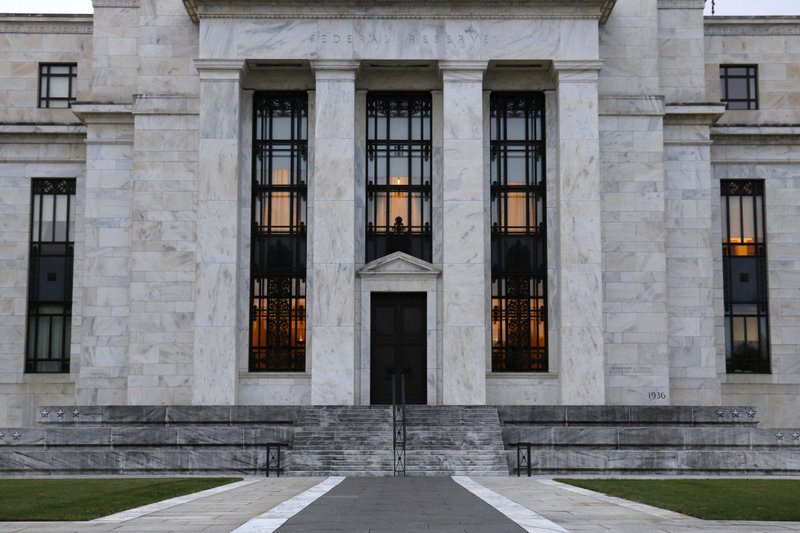WASHINGTON -- Most members of the Federal Reserve's Open Market Committee believed last month that the three rate cuts they have made this year would be enough unless the economy weakened significantly.
The minutes of the October Fed meeting, released Wednesday, reveal that "most participants" thought that this year's rate cuts would be sufficient to support moderate growth, a continued strong job market and inflation rising toward the Fed's 2% target level.
A "couple" of Fed officials suggested that this view should be reinforced by additional comments after the meeting that further cuts were "unlikely in the near term" unless the economy slowed significantly.
The CME Group, which tracks trading in the future course of Fed rates, shows a 99% likelihood that rates will remain unchanged at the Fed's next meeting Dec. 10-11.
The consensus among economists is that the Fed will now pause after cutting rates three times in 2019, with its benchmark rate now in a range of 1.5% to 1.75%. The central bank's key rate influences many consumer and business loans.
Paul Ashworth, chief U.S. economist at Capital Economics, said the minutes, along with recent comments by Powell and other officials, "confirm that the Fed is now firmly on the sidelines."
Ryan Sweet, an analyst with Economy.com, said it's clear that the Fed is in a "wait-and-see mode, and unless there are signs that the economy or inflation are deviating from their forecasts, rates will remain unchanged for some time."
President Donald Trump, who has relentlessly criticized the Fed, claiming its policy is too tight, met Monday with Powell and said he "protested" rates that he considers too high relative to other developed countries. Trump has previously said that the Fed's failure to deploy negative rates was hurting the U.S.
At a news conference after the Fed's Oct. 30 meeting, Chairman Jerome Powell had said that "monetary policy is in a good place." But Powell added that if "if developments emerge that cause a material reassessment of our outlook, we would respond accordingly. Policy is not on a pre-set course."
The minutes of the October meeting showed that "some participants" had opposed the rate cut the Fed announced then. They argued that the central bank's interest-rate stance was already appropriate and that it should take time before deciding whether to further ease credit.
But a majority of Fed voters believed it was appropriate to cut rates last month given the risks associated with slower global growth and trade uncertainty.
The Fed's decision was approved on an 8-2 vote, with Fed Presidents Esther George of Kansas City and Eric Rosengren of Boston dissenting.
In addition to his comments at his October news conference, Powell also signaled in appearances before congressional committees last week that the central bank was likely to keep its policy rate unchanged as long as the economic outlook didn't worsen.
Fed policymakers were raising interest rates steadily as recently as December to rein in a growing economy, but they changed their approach this year as tensions from Trump's trade war and slowing growth abroad weighed on the U.S. economic outlook and inflation languished below the Fed's target.
"A number of participants were concerned that weakness in business spending, manufacturing, and exports could spill over to labor markets and consumer spending and threaten the economic expansion," the minutes note.
Now, consumer spending is holding up, the labor market is strong, and trade tensions could ease -- so policymakers have been making clear that they want to pause and watch how the economy is shaping up before taking further action.
"My own thinking is that the committee has made a pretty substantial adjustment in the path of rates," Lael Brainard, a Fed governor, said Wednesday in a CNBC interview. "It will take some time to see that work through the economy. I certainly want to monitor and assess how the economy is reacting to those cuts."
Information for this article was contributed by Martin Crutsinger of The Associated Press; by Christopher Condon, Emily Barrett and Steve Matthews of Bloomberg News; and by Jeanna Smialek of The New York Times.
Business on 11/21/2019

